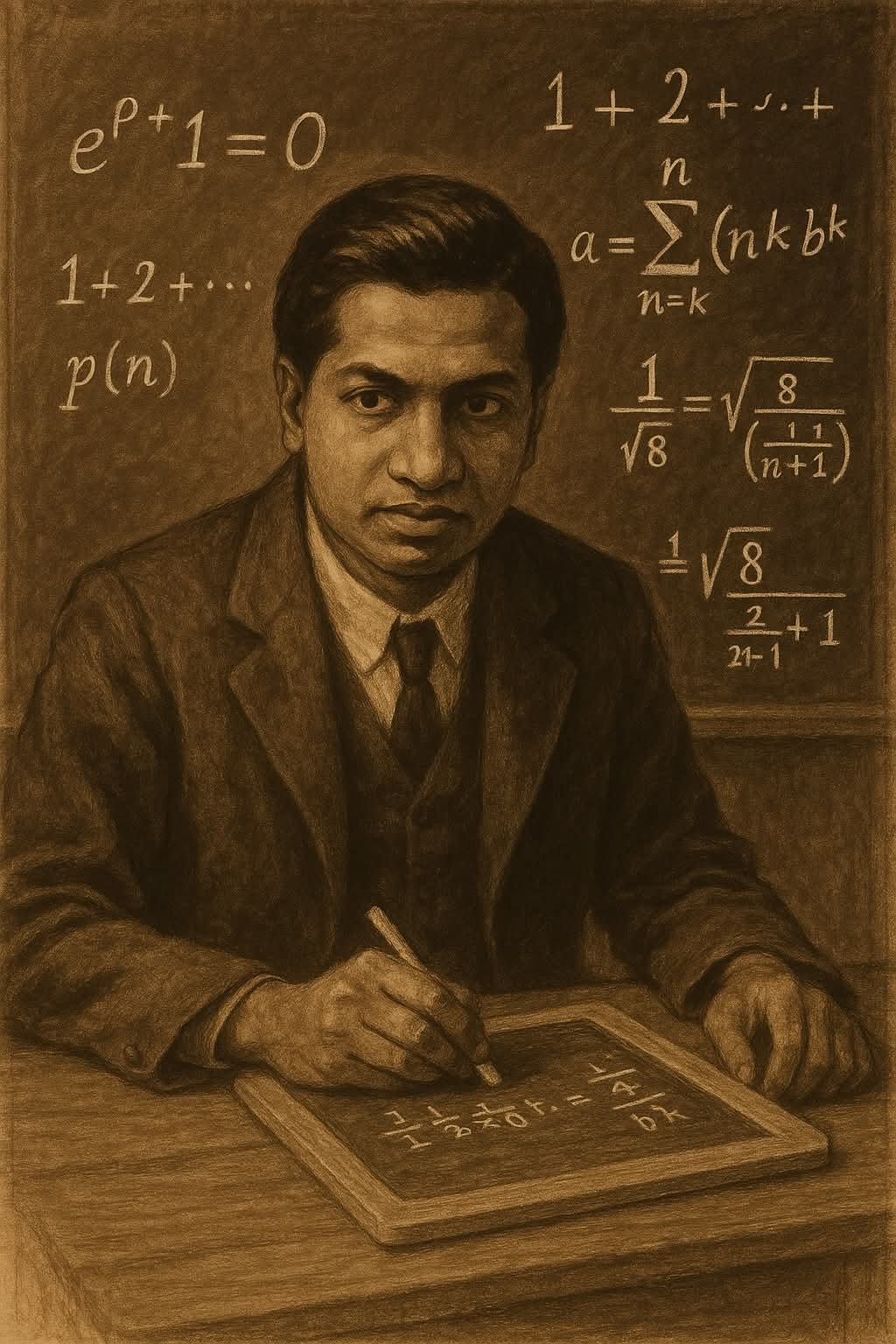« Reply #4 on: May 30, 2025, 06:30:48 PM »

Srinivasa Ramanujan was born in 1887 in a small village called Erode in southern India. His family was poor, and as a child, he had very little access to proper books or formal education in advanced mathematics. But from a young age, he showed an extraordinary curiosity about numbers.
At age 15, he stumbled upon a copy of an old mathematics book — “A Synopsis of Elementary Results in Pure and Applied Mathematics” by G.S. Carr. The book was simply a list of thousands of theorems and formulas, with little to no explanation. But for Ramanujan, it was a gold mine. He began teaching himself advanced math by working through these formulas on his own — often using chalk and a small slate, since paper was too expensive.
Despite having no formal training, he developed many original theorems, often reinventing discoveries made by the world’s top mathematicians — and even going far beyond them.
But he faced many challenges. His obsession with math led him to fail in other subjects, and he had to drop out of college. He was jobless and struggling, but he continued working on math relentlessly.
The Breakthrough
In 1913, Ramanujan took a leap of faith. He sent a letter full of his mathematical findings to G.H. Hardy, a leading mathematician at Cambridge University in England. Hardy at first thought the letter might be a prank — the formulas were strange, original, and sometimes incorrect in wording — but many were astonishingly accurate and deeply insightful.
Hardy was so impressed that he invited Ramanujan to Cambridge. After much persuasion (and overcoming religious and cultural challenges), Ramanujan traveled to England in 1914.
A New World
At Cambridge, Ramanujan finally had access to a world-class mathematical environment. He and Hardy collaborated on groundbreaking work in number theory, infinite series, and partitions — fields that are still deeply influenced by Ramanujan’s contributions.
But the cold English climate, wartime food shortages, and his vegetarian diet weakened his health. Ramanujan developed tuberculosis and eventually returned to India, where he died in 1920 at the young age of 32.
Legacy
Despite his short life, Ramanujan left behind nearly 4,000 original theorems, many of which were ahead of his time. His work still influences modern mathematics, including areas like string theory and black hole physics.
His life story is a powerful reminder that raw talent, passion, and perseverance can shine through any hardship. Even without resources, mentorship, or formal education, Ramanujan became one of the greatest mathematicians the world has ever known.
« Last Edit: August 08, 2025, 02:35:05 PM by MysteRy »

Logged